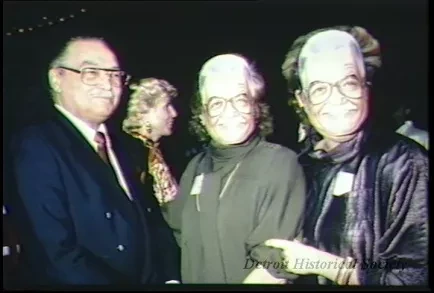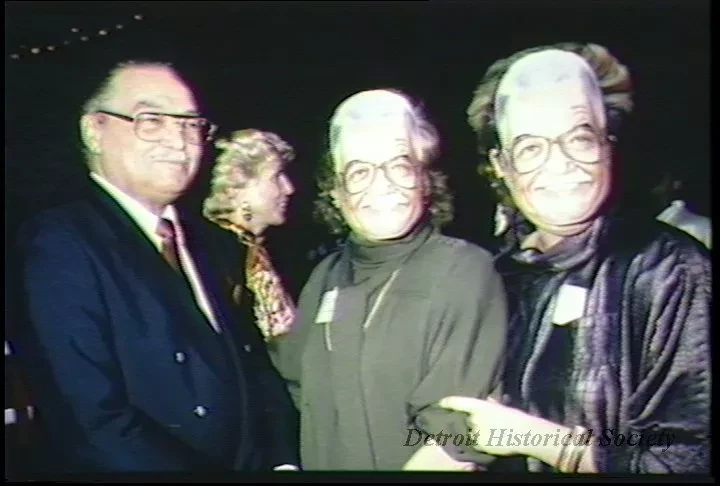U-Matic
The City, The People, The Man, 14 Years of CAY
U-Matic tape containing the film "The City, The People, the Man... 14 Years of Coleman A. Young," a production of the City of Detroit Department of Public Information. The film is presented as a series of still photos and political cartoons providing the story of Coleman A. Young's first 14 years in office as the mayor of Detroit.
The film begins with the events of the summer of 1967, which it characterizes as a rebellion against police brutality, unemployment, and poverty by the city's African American residents. The election of Coleman A. Young as the city's first African American mayor in 1974 is described as a hopeful turn against this background. Audio from his inauguration speech--including his "hit the road" quote--is used to underscore this section, as is a title card showing his ten point program from his first 100 days in office.
The video then begins to recount the mayor's accomplishments. A pair of title cards list some of his early ones. The narration and stills detail others, beginning with the city's first annual air show. Next the film lists housing developments which opened during his administration, such as Diggs Terrace, the renovated Sojourner Truth Homes, Riverfront Apartments, Trolley Plaza, New Center, Harbor Town, Lexington Village, and the Millender Center.
The film also changes in the Detroit Police Department during Young's administration including women officers going on patrol duty, the adoption of affirmative action in recruiting and hiring, and the opening of police mini-stations.
The film also lists new events and attractions that came about under Young, including renovations at the Belle Isle Zoo, the Butzel Family Center, the holding of the World's Largest Garage Sale, the Montreux-Detroit International Jazz Festival, the International Grand Prix, and the "Do It In Detroit" promotional campaign.
New construction and developments are also highlighted, including the Renaissance Center, the Riverfront Apartments, the redevelopment of Washington Boulevard into a pedestrian mall, the opening of the Detroit Free Press Plant on the riverfront, the Millender Center, the downtown WDIV Television Studio, and expansion at the Detroit Medical Center.
The video also notes that several of the development projects undertaken under Young were controversial. Joe Louis Arena, the Resource Recovery Plan, the People Mover, and the General Motors' Detroit/Hamtramck Assembly in Poletown are each listed in this segment. Audio recordings from angry Poletown residents are accompany shots of the neighborhood.
In contrast the film then features a recording of positive words about Young from Doug Fraser of the United Auto Workers.
Next, the film emphasizes Young's efforts to fight crime, such as No Crime Day, and No More Devil's Night. It also notes the attendance at recent downtown events.
The video then turns toward plans for Detroit's future. Here, Cobo Hall's expansion, the construction of more hotels, Chrysler's Jefferson North Assembly (here called the Jefferson Conner Chrysler Plant), the Harbortown development, and the new African American history museum are also listed.
The film then emphasizes Young's ability to forge coalitions with business leaders. Henry Ford II, Max Fisher, Benjamin Hooks, and Lee Iacocca are presented as examples.
The film closes with a "Memories" section showing photos of Young throughout his career shown over a rendition of Sammy Davis Jr.'s Hello Detroit. Young is shown with famous figures such as Rosa Parks, G. Mennen Williams, Jimmy Carter, Walter Mondale, Bill Cosby, Muhammad Ali, Sammy Davis, Jr., and Stevie Wonder.
The video is on a 3M UCA-30 U-Matic with a handwritten 3M label on its top. The tape is housed within a black plastic latching case with a matching 3M label on its cover.
Request Image

